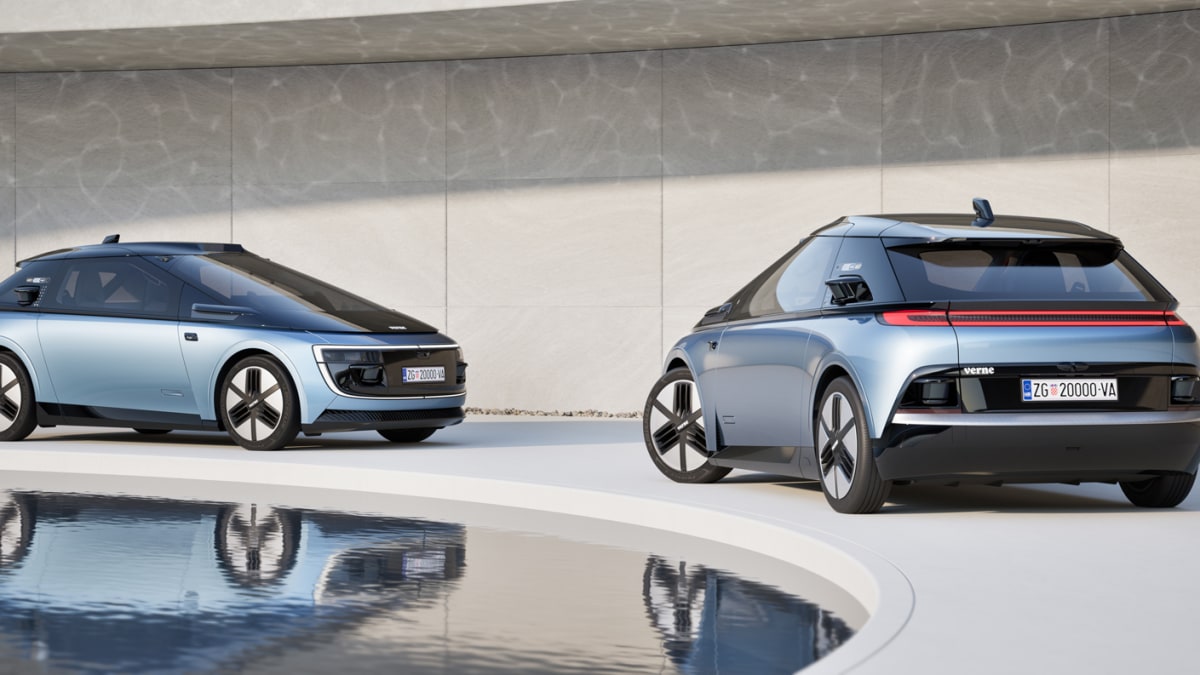
After opening the next chapter in Bugatti historyRimac is turning its attention to the other end of the automotive sector. It launched a brand called Verne that was created to develop and operate a fleet of autonomous electric taxis in some of the busiest cities in the world.
Named after Jules Verne, a French poet and novelist who died in 1905, the division is the brainchild of Mate Rimac. previously called Project 3 Mobility. Verne’s robotaxi is a wedge-shaped two-seater built on a specially designed platform and powered by an electric motor. Technical specifications weren’t released, but the brand noted that its EV is designed exclusively for autonomous driving — it has no steering wheel or pedals, and drivers won’t be able to climb into a Verne. dealership and buy one of his cars to commute in. The self-driving components include an armada of cameras, radars and lidar, as well as Mobileye’s Drive software platform. Verne points out that the system is versatile enough to adapt to different weather conditions, different road types and even local driving styles.
Inside, there’s room for two passengers on reclining seats, a center console with a tablet and various buttons, as well as a 43-inch screen that stretches across most of the dashboard. Most robo-taxis we’ve seen before have accommodated four or more passengers, so Verne’s two-seat layout may look strange at first glance. The company explains that there is a good reason for this: “The data shows that nine out of ten rides are used by one or two people,” explains Adriano Mudri, the brand’s head of design. He is also responsible for the Rimac Nevera.
Designers focused on the user experience. Marketed as offering more interior space than a Rolls-RoyceThe robotaxi features a 17-speaker sound system, seats with five comfort levels so passengers can work, relax or rest, and a panoramic roof panel. Crucially, there’s a button on the center console called the Median that allows passengers to start and stop the ride. Verne predicts this feature will help convince users who may be skeptical of autonomous technology to give its service a try; they are just a push of a button away from getting out.
Verne’s service will be app-based and users can customize each car before it appears. For example, they can set the mood lighting and the climate control system. At the end of a shift, the robotaxis autonomously returns to what Verne calls a Mothership. Here the cars are inspected, cleaned, maintained and charged to ensure they are ready to hit the road the next day. That’s a wise decision, as lack of hygiene is one of the problems that plagued the Autolib car-sharing service in Paris, France, until it closed in 2018.
Verne will produce its robotaxi in a new factory currently under construction near Zagreb, Croatia. Zagreb is also where Verne will start operating in 2026. The company will then expand across Europe and the Middle East. It has signed agreements with eleven cities and is in talks with more than thirty cities around the world about potentially setting up a mothership. There’s no word yet on whether it has set its sights on the US
